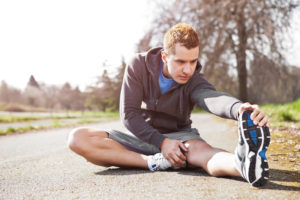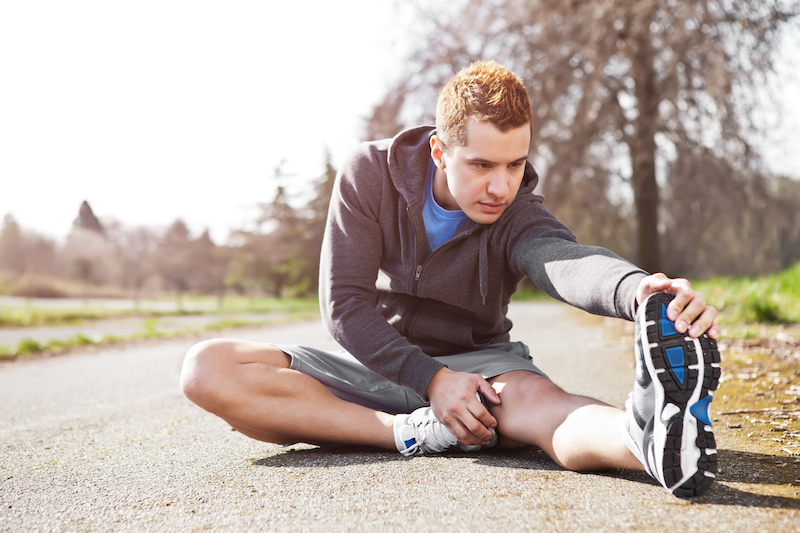What if you could prevent your next injury? The injury that is going to keep you from working for a few days. Or the one that disrupts your next vacation. Perhaps the injury that keeps you from running the race that you have been training on for months. What if you could prevent that injury today? It is possible if you listen to a few simple cues that your body sends you. Given that the majority of injuries occur because of repetitive trauma, the signs of overuse can be spotted and treated today to prevent tomorrow’s next injury.
Signs Of Overuse
Overuse injuries occur when the body can no longer recover from the tasks that are being asked of it. Each time the body is stressed and fails to recover fully, you inch closer and closer to the next moment that your injury will occur. When you recognize these slow changes, you can prevent your next injury.
Stay-at-home Mom Case Study:
A stay-at-home mother of 3 children named Elisa, has been experiencing back stiffness. Each day, she performs multiple bending activities of her lumbar spine. Elisa bends numerous times picking up her one year old, putting away toys on the floor, vacuuming the floors, and putting dishes away in the kitchen. She has been trying to workout recently and her new trainer has her doing crunches to tighten her abdominal area. Each bend and crunch shortens and tightens the hip flexor muscles of the lumbar/pelvic region. This in turn weakens her glute and hamstring muscles. The effect of this pattern is that she feels back fatigue, stiffness, and a dull ache in her low back and high hamstrings. These symptoms are mild at first but have been increasing the past few weeks. If Elisa recognizes these symptoms of overuse, she can take steps now to prevent the oncoming injury. If she does not make any changes, she may be soon looking at a muscular strain of her low back or worse, a herniation of her lumbar disc.
Elisa could prevent this impending injury by performing a few easy preventative exercises. First, upon waking, she can reduce the pressure in her lumbar spine by performing a Cat/Camel (aka Cat/Cow) in bed or on the bedroom floor. The majority of low back injuries occur within the first hour of the day and this exercise has been shown to reduce that risk. Secondly, she can perform a lunge stretch to reduce the shortening of the hip flexor muscles that produce the stiffness in the lumbar spine. We have demonstrated these two exercises in our, “5 Exercises To Fix Your Low Back Pain” video, https://youtu.be/f8XoIoiMmA4.
A third step that Elisa can take is to reduce the repetitive bending of the low back. She should stop doing her crunches immediately and instead perform a side-bridge exercise to strengthen her core musculature.
Likewise, she can alter her bending form by taking a wide squat stance or a lunge stance when she is picking up her little one or things around the house. This will reduce the flexion in her low back and reduce the overuse on her spine and lumbar discs. If she combines this with a some sound chiropractic care, the chances of her injuring her back with the next household chore is minimal.
Athlete Case Study:
Runners, cyclists, or other athletes often have a great sense of the how their body is performing because of their constant training. Unfortunately, these highly driven people frequently drive right past common sense and end up creating the injury that keeps them from doing what they love. So how can they prevent tomorrow’s injury today? Take Mike for example. Mike is an avid runner who likes to do a few races per year. He is not exceptionally fast but finds that a race can keep him motivated and moving in a general healthier direction.
However, lately, Mike has been experiencing some fatigue. He knows he has been training harder than normal. He has upped his distance, speed, and has thrown in a few hill workouts. At the same time, Mike has been trying to keep his gym workout moving forward. This combination of things has been catching up to Mike and he is starting to feel its effects. The mornings have been tough with Mike not feeling like getting up. His muscles are very stiff for the first hour of the day and he has even had some sharp pain in his right leg around his hip, knee, and ankle. This week, Mike has been missing that spark that he normally has during the day at work and has been dreading the harder running workouts. In the gym, he has noticed that his strength has decreased slightly and he has seen his balance worsen when performing yoga. Mike would like to take a day off, but his training schedule does not allow for it for four more weeks.
 This common scenario often does not end well. Frequently, these patients enter my office with a strain or mild tear of the lower extremity musculature. The overtraining creates scar tissue in the muscles resulting in the initial soreness and stiffness. The effect of this is an alteration in the biomechanics of the athlete. This creates an overload to the impending injury site. With the combination of the overload and the general fatigue, an injury is likely to occur. If Mike would simply make a few adjustments to his training, he could prevent the next injury and make his next race successful.
This common scenario often does not end well. Frequently, these patients enter my office with a strain or mild tear of the lower extremity musculature. The overtraining creates scar tissue in the muscles resulting in the initial soreness and stiffness. The effect of this is an alteration in the biomechanics of the athlete. This creates an overload to the impending injury site. With the combination of the overload and the general fatigue, an injury is likely to occur. If Mike would simply make a few adjustments to his training, he could prevent the next injury and make his next race successful.
Mike’s first adjustment would be to cease or greatly reduce his gym workout. When you are building for a race event, the natural increase in training volume has to be equaled by a reduction in the cross-training volume. This give and take ensures enough rest time to allow for muscle recovery. Morning fatigue is one of the first signs that you are not recovering well enough from your exercise and longer rest times should be introduced.
The second adjustment would be to correct the biomechanical changes. In these situations, the lower extremity will most often follow a predictable pattern known as the “Lower Cross Syndrome”. This pattern first described by the famous physical medicine practitioner, Karl Lewitt, M.D., is characterized by tightness in the hip flexors and hamstrings and weakness of the glutes and abdominals. This starts a chain reaction of increasing tightness of the groin and weakness of the hip stabilizers. Lower Cross Syndrome impedes balance, hip flexibility, stresses the lateral hip and knee, and ultimately causes a loss of strength and speed.
To correct this problem, stretching the hip flexors and groin muscles must be done. I would advise not to stretch the hamstrings or the calf, but rather use a foam roller to loosen them. Stretching the hamstrings often irritates the hamstrings and low back while stretching the calf can irritate the plantar fascia. The foam roller can be a great way to reduce the tension in these muscle groups without fear of irritation from over-stretching. Likewise, try our “5 Pre-run Exercise” video for easy, dynamic movements to prepare you for your next run, https://youtu.be/cyEA6dIdyKA.
Active Release Technique can also be used to improve the mechanical dysfunctions.
This soft-tissue technique is a valuable tool of our office to rid overused muscles of unwanted scar tissue. When coupled with a chiropractic adjustment, Active Release can reduce most overuse injuries in a short amount of time. Either of the patient scenarios described above would benefit from a combination of Active Release and chiropractic. See how it helped Kevin run the Blue Ridge Marathon, https://youtu.be/iNiWmsO2kQ8.
Both of our case studies could benefit from a tweak of their nutritional intake. A protein shake can go a long way in helping the body recover from overuse injuries. The combination of amino acids, including a high percentage of L-glutamine, is useful in repairing muscles after exercise and activity.
Try this recipe: The 4 Berry Green Smoothie
1/2 cup of ice
1/2 cup of unsweetened Kefir
1/2 cup of unsweetened coconut milk
1/4 cup of blueberries
1/4 cup of raspberries
1/4 cup of strawberries
1/4 cup of blackberries
1/2 cup of spinach
1 tablespoon of flax oil
1 scoop of vanilla protein powder
If you’re looking for more recipes download our Smoothology 101 recipe book at www.coreroanoke.com/LivFit.
For more information on how to Prevent Tomorrow’s Injury Today check out our upcoming class, March 30th @7:15pm.
This class will be held at Fleet Feet Sports in Roanoke and will focus on how to train through minor injuries, how foam rolling can be beneficial, how to train properly for an upcoming race, and much more.
Come and join us by signing up today at our chiropractic office in Roanoke, Virginia!

Daryl C. Rich, D.C., C.S.C.S., A.R.T.





